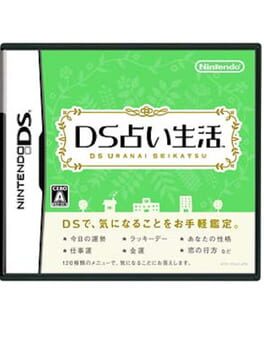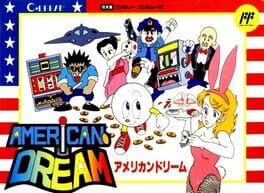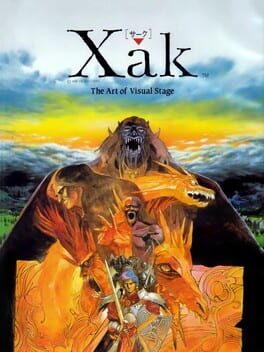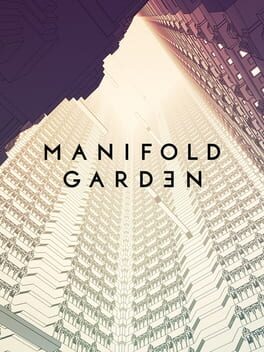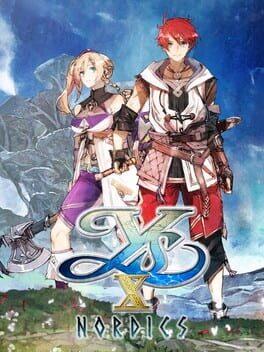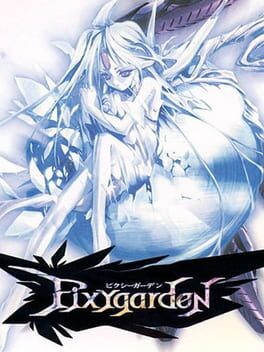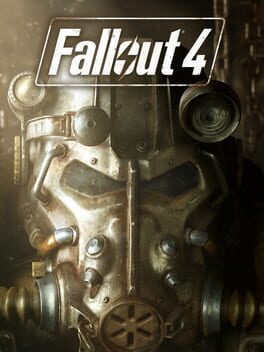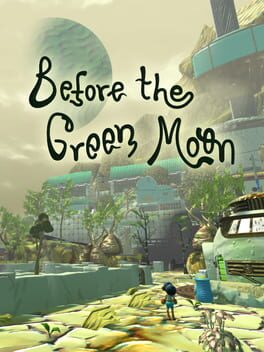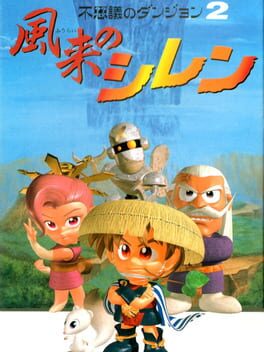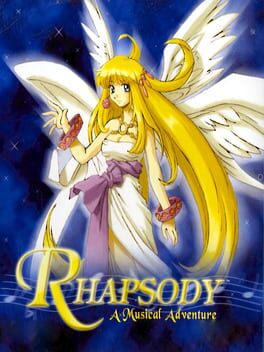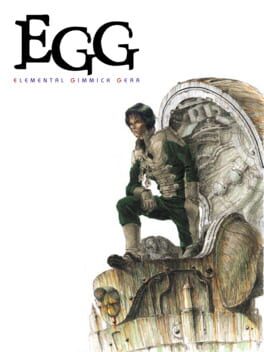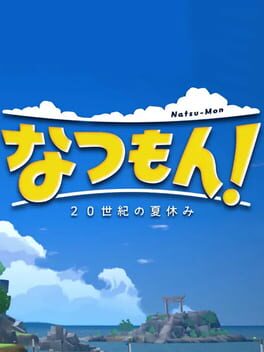MelosHanTani
BACKER
2009
hehe oh good i got this game added to igdb! well, I was researching fortune telling and divination last month so I decided to check out one of these games. you enter some basic information about yourself and then you can get all sort of info - daily horoscopes, or fortunes tailored to particular topics... love...work...
The horoscopes are kind of fun, they say whether it'll be a good day for X, Y or Z. Like "you'll have trouble with business negotations today!" it told me on a day where I did end up having trouble...
You can also specify friends' or.. potential lovers... names and see your compatibility.
There's a wide variety of divination methods. A lot of complicated chinese ones where you don't really understand what's going on at all.
Overall this kind of lacks that social dynamic going to a real in-person fortune teller would have, but it's also just fun to think about your day through these random fortunes. The social elements are amusing as well.
I've always thought fortune/divination would be an interesting thing implemented in game somehow - if approached from a cultural standpoint. But most of the time it's a pretty dry, stat-based treatment about passing certain dialogue choices, increasing drop rates, etc, rather than getting at the social appeal of divination and how it goes back and has held appeal for humanity for millennia as we seek to feel more certain about the future or ourselves...
The horoscopes are kind of fun, they say whether it'll be a good day for X, Y or Z. Like "you'll have trouble with business negotations today!" it told me on a day where I did end up having trouble...
You can also specify friends' or.. potential lovers... names and see your compatibility.
There's a wide variety of divination methods. A lot of complicated chinese ones where you don't really understand what's going on at all.
Overall this kind of lacks that social dynamic going to a real in-person fortune teller would have, but it's also just fun to think about your day through these random fortunes. The social elements are amusing as well.
I've always thought fortune/divination would be an interesting thing implemented in game somehow - if approached from a cultural standpoint. But most of the time it's a pretty dry, stat-based treatment about passing certain dialogue choices, increasing drop rates, etc, rather than getting at the social appeal of divination and how it goes back and has held appeal for humanity for millennia as we seek to feel more certain about the future or ourselves...
1989
Points for the satire of America (you can buy a gun to protect yourself from muggers but if you go to jail you have to pay $100k bail) and the dragon-quest-y world map with 'random encounters with gambling minigame enemies' but this is just a slot machine game at the core. The odds are stacked in your favor but in my half hour with it it still takes forever to build up enough money to reach the next stage (of higher stakes slots lol).
Maybe there's something to be said about how 'grinding slots to reach the next stage of betting amounts' kind of mimics grinding in RPGs
Or more distinctly, the process of tweeting and trying to amass followers. ha ha.. ha..
Maybe there's something to be said about how 'grinding slots to reach the next stage of betting amounts' kind of mimics grinding in RPGs
Or more distinctly, the process of tweeting and trying to amass followers. ha ha.. ha..
Played the SNES version.
Competent but fairly average action RPG. Takes its structure from Ys (menu layout, slow grinds on the overworld) but drops its bump combat for a really fast-paced Zelda, but if the hitboxes were kind of peculiar. There's a weird trading-blows feel with enemies where your sword seems to only have 1 or 2 pixels of advantage, so there's some finesse to spamming attack and trying to faintly flick an enemy before quickly backing off to avoid being hurt. Fun, although it seems that's about as deep as the combat went in the first hour across maybe 7 or 8 enemy types.
I did like the one boss I fought though. Really simple pattern but still fun to learn. falling plum projectiles.
The PC-98 version looks like it might use Bump Combat instead? Hard to tell. But the enemies also look like they move slower on that version. So overall maybe the PC 98 version is actually more tightly designed...?
Competent but fairly average action RPG. Takes its structure from Ys (menu layout, slow grinds on the overworld) but drops its bump combat for a really fast-paced Zelda, but if the hitboxes were kind of peculiar. There's a weird trading-blows feel with enemies where your sword seems to only have 1 or 2 pixels of advantage, so there's some finesse to spamming attack and trying to faintly flick an enemy before quickly backing off to avoid being hurt. Fun, although it seems that's about as deep as the combat went in the first hour across maybe 7 or 8 enemy types.
I did like the one boss I fought though. Really simple pattern but still fun to learn. falling plum projectiles.
The PC-98 version looks like it might use Bump Combat instead? Hard to tell. But the enemies also look like they move slower on that version. So overall maybe the PC 98 version is actually more tightly designed...?
1993
2019
This isn't really a review, but I've been friends with the director William for a long time. We went to the same college in Chicago (though years apart) and a while after releasing Anodyne in 2013 he contacted me about playtesting an early version of MG, then called "Relativity". I think this was either the fall of 2013 or 2014... we lived in the same neighborhood. He's also of Taiwanese origin which is especially rare that we were both doing independent games.
Anyways, as it turns out, after moving elsewhere in Chicago, I ended up moving back to the same neighborhood as him a year or so later so we would meet up now and then and catch up about what our games were up to. It felt like for a long time I was just stuck on Even the Ocean, him on Manifold Garden... eventually ETO did come out in 2016, but it'd be a few more years till Manifold Garden came out. I remember meeting for coffee and hearing about his various negotiations, navigating the world of funding, building a team, etc. I remember we had breakfast at a diner when his friend Alan Hazelden (Draknek - a prolific puzzle game designer) visited.
It was through him that I heard about a game design teaching job at SAIC and taught part time at that a few years while making All Our Asias and Anodyne 2. The neighborhood we were in was a bit isolated from the (small) games scene in Chicago, so it felt like that neighborhood was our 'gamer island' of sorts...
Anyways, as time got on I would playtest and look at more complete versions of the game. Everyone got older (at some point William hit 30, I remember a birthday party). Like with my own games it was neat to see what were test spaces slowly become complete levels, or see levels moved around in the sequence of the game, or hear music and sound added for the first time.
Eventually I moved off to Japan as I released Anodyne 2, and I believe missed the launch celebration for MG! But it was nice to see it successfully launch with platform support. In later years during the pandemic I got to visit William's new office space, we also visited our alma mater and their new games program. It's been a while since I've been back but we keep in touch now and then and his studio seems to be doing well.
I don't know how much writing has been done on this, but it's a weird thing, being in a games scene for over 10 years... a lot of folks I knew early on - when we were all teenagers or early 20s - some dropped out of the scene, some are still releasing but not really on social media... people developed different styles, different life priorities and styles of making games. We see each other's games in different states of progress... always sort of subtly reflecting on our own game creation practice as we look at and unconsciously analyze and think about what the others are doing.
Anyways, as it turns out, after moving elsewhere in Chicago, I ended up moving back to the same neighborhood as him a year or so later so we would meet up now and then and catch up about what our games were up to. It felt like for a long time I was just stuck on Even the Ocean, him on Manifold Garden... eventually ETO did come out in 2016, but it'd be a few more years till Manifold Garden came out. I remember meeting for coffee and hearing about his various negotiations, navigating the world of funding, building a team, etc. I remember we had breakfast at a diner when his friend Alan Hazelden (Draknek - a prolific puzzle game designer) visited.
It was through him that I heard about a game design teaching job at SAIC and taught part time at that a few years while making All Our Asias and Anodyne 2. The neighborhood we were in was a bit isolated from the (small) games scene in Chicago, so it felt like that neighborhood was our 'gamer island' of sorts...
Anyways, as time got on I would playtest and look at more complete versions of the game. Everyone got older (at some point William hit 30, I remember a birthday party). Like with my own games it was neat to see what were test spaces slowly become complete levels, or see levels moved around in the sequence of the game, or hear music and sound added for the first time.
Eventually I moved off to Japan as I released Anodyne 2, and I believe missed the launch celebration for MG! But it was nice to see it successfully launch with platform support. In later years during the pandemic I got to visit William's new office space, we also visited our alma mater and their new games program. It's been a while since I've been back but we keep in touch now and then and his studio seems to be doing well.
I don't know how much writing has been done on this, but it's a weird thing, being in a games scene for over 10 years... a lot of folks I knew early on - when we were all teenagers or early 20s - some dropped out of the scene, some are still releasing but not really on social media... people developed different styles, different life priorities and styles of making games. We see each other's games in different states of progress... always sort of subtly reflecting on our own game creation practice as we look at and unconsciously analyze and think about what the others are doing.
2023
Final review (15-18 hours) - 3/5
Alright, so now that I've gotten more into the game I'm going to abandon it as much as I like Ys. The sea exploration was an interesting idea but it's a bit slow, there's also a lot of other little systems that feel like checklist padding - the many items that upgrade your stats in hard to notice ways, constantly buying new equipment, etc. They're time consuming but barely meaningful. Ship battles are hard to control and a bit clunky, mostly feels like waiting for ammo to reload.
I like some of the movement options (the skateboard and grapple), the idea of holding defend to avoid red moves and dashing to avoid blue is neat, but felt underutilized. It's also hard to make 'work' with how cameras work in these games.
Characters are okay... I liked how the story started with the town but then they kind of scrap the town and everyone ends up on this ship. It kind of becomes typical Falcom story fare since their Cold Steel days, which is like... eh, it's okay in small amounts but it's hard to sit through in a game that seems like it's gonna be 40+ hours.
Level design sometimes becomes fun (weirdly, in an early dungeon), and seems to make use of multiple enemies attacking with interesting level geometry, but a lot of times has that typical "Falcom Filler Feeling" of really big stages, random enemies that don't really stand a chance against you, tons of things to smash to gain items.
I like the idea of the partner combat, but with the skill cooldowns there's just so much information to keep track of that it feels really clunky. Run out of SP on one character? Press Y after a weird delay to swap to the other. As usual there are too many skills and they all kind of feel the same, not much utility difference. There's a mastery system with unknown usage other than adding another number to fill to 100%...
Overall it feels really obvious that Falcom doesn't seem to get enough time to really rethink their systems - it's all these old, stale ideas that didn't really work in past Ys games kinda crammed together. There's a bit of some new ideas shining through that DOES kind of work - finding new islands to explore is fun (until the level shapes start to feel kinda similarish and limited), the idea of the partner system is cool, even if the implementation is bloated.
---
Review update 1 (15 hours) - 4/5
I'm downgrading this to 4 mostly because the gameplay isn't really there. I think there are some good ideas they were trying out but it could have used more time in the oven / there's all this other 'compulsive' systems and the flashy character-action skill attack explosions that kind of water down what is working.
It shines at some moments but at other times it's kind of the compulsive 'fill in the blank' stuff (like S-ranking the ship invasion missions) or the normal ys 8/9-esque 'walk through an area of enemies you can mostly avoid'. Lots of re-used minibosses and accessories that don't really have much of a use, the stat/orbment-esque system is also kind of weird because you don't need it on easy difficulties and on higher difficulties it's yet to be seen how useful/required it is.
The tricky thing with stat upgrade systems in fast-paced combat games is that playing at higher difficulty well means you're needing to basically not even getting hit.. so defense trees don't help much. I guess increasing attack means your DPS goes up, but I'm not sure how much time that shaves off a boss fight.
Original review (5-10 hours)
angeline era is delayed because i'm playing Ys X! ha ha
I've yet to really get the ensemble cast together (I just finished the 3rd or 4th major boss) but so far the game focuses on Adol and Karja. It's a welcome change to me as it's both reminiscent of my favorite SK (Since Kondo) Falcom game, Trails in the Sky 1 - seemingly focusing on Adol/Karja and then other characters coming and going. We'll see how that lasts, but it seems like they're the only playable ones, so hopefully there aren't too many of those 'everybody has a turn to say something insignificant' jrpg ensemble dialogue scenes.
It's a little hard to say how the overall feel will come out, but the first 2-3 hours feel very Trails-y with a focus on worldbuilding/visiting towns/minimal combat, although nearing hour 8, it's shifted to more of a normal cadence of town stuff/long dungeon with exposition now and then that feels more reminiscent of recent Ys. I haven't seen a quest log yet (yay!) but we'll see how long that lasts Ha Ha Ha. It feels more 'true' to the pulpy adventurer feel of Adol in a way that Celceta/8/9 didn't really to me.
--
But what excites me more is that it seems like Falcom is actually Trying To Do Level Design again. Ys 9 and maybe 8 had a little of this, but ultimately their combat systems were so fast-paced that they still felt like weird adaptations of Ark-era Ys, with the awkward integration of parries/timed dodge rolls.
In X, the pace has slowed down. Instead you are in one of three states:
- Guard (holding R2)
- Attacking/Vulnerable
- Dashing (holding L1)
There are Blue attacks which you auto-dodge when holding L1, and Red attacks which are only guardable with R2. Any other attack is auto-guardable when holding R2. It sounds really simon-says-y on paper but I think it's the best modern Ys combat yet:
Because there's a little delay going from one state to another, I find so far that (on Nightmare, the 2nd-hardest default difficulty) there's an actual interesting friction to fighting. You can't just whip out a dodge or parry at any moment, you have to be just careful enough to look at the enemy and get a few hits in before getting ready for a guard. Multiple enemies can stand at different points on the map and ranged attacks actually hurt, so there's a fun level of awareness you're expected to maintain.
Of course, I think a lot of this friction vanishes if you're playing on easier difficulties, but I think the way difficulty scales here is more interesting than Ys 8/9 with the heavy focus on move memorization/etc. In X you're thinking more about how many attacks it's safe to get in before playing more defensively - and the result is that it feels similar to Ark/6/Origin-era Ys in some ways.
What's narratively nice is that you only have 2 characters to control - and a gimmick is that when you hold R2, you enter 'combination state' - which auto-guards by default, but also lets you use what are basically heavy attacks. The result is that it really does feel like Karja/Adol are fighting as a team, which goes great with the pulpy feel of the story.
Another fun touch is that, while you don't need to 'perfect' dodge or parry, it seems like if you DO time it well enough you get to do a powerful counterattack. Maybe my timing just sucks but I couldn't seem to trigger these more than once during boss fights, but it's fun to see them come out.
There's skill customization and equipment, but so far they don't seem super important - and I like it that way. The point here isn't really roleplaying as it is just seeing the duo grow stronger.
Overall I'm glad Falcom has managed to design a combat system that feels a bit more on-its-own and suitable to the kind of stories they want to tell. Excited to play more!
Alright, so now that I've gotten more into the game I'm going to abandon it as much as I like Ys. The sea exploration was an interesting idea but it's a bit slow, there's also a lot of other little systems that feel like checklist padding - the many items that upgrade your stats in hard to notice ways, constantly buying new equipment, etc. They're time consuming but barely meaningful. Ship battles are hard to control and a bit clunky, mostly feels like waiting for ammo to reload.
I like some of the movement options (the skateboard and grapple), the idea of holding defend to avoid red moves and dashing to avoid blue is neat, but felt underutilized. It's also hard to make 'work' with how cameras work in these games.
Characters are okay... I liked how the story started with the town but then they kind of scrap the town and everyone ends up on this ship. It kind of becomes typical Falcom story fare since their Cold Steel days, which is like... eh, it's okay in small amounts but it's hard to sit through in a game that seems like it's gonna be 40+ hours.
Level design sometimes becomes fun (weirdly, in an early dungeon), and seems to make use of multiple enemies attacking with interesting level geometry, but a lot of times has that typical "Falcom Filler Feeling" of really big stages, random enemies that don't really stand a chance against you, tons of things to smash to gain items.
I like the idea of the partner combat, but with the skill cooldowns there's just so much information to keep track of that it feels really clunky. Run out of SP on one character? Press Y after a weird delay to swap to the other. As usual there are too many skills and they all kind of feel the same, not much utility difference. There's a mastery system with unknown usage other than adding another number to fill to 100%...
Overall it feels really obvious that Falcom doesn't seem to get enough time to really rethink their systems - it's all these old, stale ideas that didn't really work in past Ys games kinda crammed together. There's a bit of some new ideas shining through that DOES kind of work - finding new islands to explore is fun (until the level shapes start to feel kinda similarish and limited), the idea of the partner system is cool, even if the implementation is bloated.
---
Review update 1 (15 hours) - 4/5
I'm downgrading this to 4 mostly because the gameplay isn't really there. I think there are some good ideas they were trying out but it could have used more time in the oven / there's all this other 'compulsive' systems and the flashy character-action skill attack explosions that kind of water down what is working.
It shines at some moments but at other times it's kind of the compulsive 'fill in the blank' stuff (like S-ranking the ship invasion missions) or the normal ys 8/9-esque 'walk through an area of enemies you can mostly avoid'. Lots of re-used minibosses and accessories that don't really have much of a use, the stat/orbment-esque system is also kind of weird because you don't need it on easy difficulties and on higher difficulties it's yet to be seen how useful/required it is.
The tricky thing with stat upgrade systems in fast-paced combat games is that playing at higher difficulty well means you're needing to basically not even getting hit.. so defense trees don't help much. I guess increasing attack means your DPS goes up, but I'm not sure how much time that shaves off a boss fight.
Original review (5-10 hours)
angeline era is delayed because i'm playing Ys X! ha ha
I've yet to really get the ensemble cast together (I just finished the 3rd or 4th major boss) but so far the game focuses on Adol and Karja. It's a welcome change to me as it's both reminiscent of my favorite SK (Since Kondo) Falcom game, Trails in the Sky 1 - seemingly focusing on Adol/Karja and then other characters coming and going. We'll see how that lasts, but it seems like they're the only playable ones, so hopefully there aren't too many of those 'everybody has a turn to say something insignificant' jrpg ensemble dialogue scenes.
It's a little hard to say how the overall feel will come out, but the first 2-3 hours feel very Trails-y with a focus on worldbuilding/visiting towns/minimal combat, although nearing hour 8, it's shifted to more of a normal cadence of town stuff/long dungeon with exposition now and then that feels more reminiscent of recent Ys. I haven't seen a quest log yet (yay!) but we'll see how long that lasts Ha Ha Ha. It feels more 'true' to the pulpy adventurer feel of Adol in a way that Celceta/8/9 didn't really to me.
--
But what excites me more is that it seems like Falcom is actually Trying To Do Level Design again. Ys 9 and maybe 8 had a little of this, but ultimately their combat systems were so fast-paced that they still felt like weird adaptations of Ark-era Ys, with the awkward integration of parries/timed dodge rolls.
In X, the pace has slowed down. Instead you are in one of three states:
- Guard (holding R2)
- Attacking/Vulnerable
- Dashing (holding L1)
There are Blue attacks which you auto-dodge when holding L1, and Red attacks which are only guardable with R2. Any other attack is auto-guardable when holding R2. It sounds really simon-says-y on paper but I think it's the best modern Ys combat yet:
Because there's a little delay going from one state to another, I find so far that (on Nightmare, the 2nd-hardest default difficulty) there's an actual interesting friction to fighting. You can't just whip out a dodge or parry at any moment, you have to be just careful enough to look at the enemy and get a few hits in before getting ready for a guard. Multiple enemies can stand at different points on the map and ranged attacks actually hurt, so there's a fun level of awareness you're expected to maintain.
Of course, I think a lot of this friction vanishes if you're playing on easier difficulties, but I think the way difficulty scales here is more interesting than Ys 8/9 with the heavy focus on move memorization/etc. In X you're thinking more about how many attacks it's safe to get in before playing more defensively - and the result is that it feels similar to Ark/6/Origin-era Ys in some ways.
What's narratively nice is that you only have 2 characters to control - and a gimmick is that when you hold R2, you enter 'combination state' - which auto-guards by default, but also lets you use what are basically heavy attacks. The result is that it really does feel like Karja/Adol are fighting as a team, which goes great with the pulpy feel of the story.
Another fun touch is that, while you don't need to 'perfect' dodge or parry, it seems like if you DO time it well enough you get to do a powerful counterattack. Maybe my timing just sucks but I couldn't seem to trigger these more than once during boss fights, but it's fun to see them come out.
There's skill customization and equipment, but so far they don't seem super important - and I like it that way. The point here isn't really roleplaying as it is just seeing the duo grow stronger.
Overall I'm glad Falcom has managed to design a combat system that feels a bit more on-its-own and suitable to the kind of stories they want to tell. Excited to play more!
1999
There's always been something in the 'growing/nurturing/gardening' type of games that I feel like contain the essence of saving farming games from their evolutionary dead end as Harvest-Moon-clones. I don't know what that essence is, but the point I'm getting at is that I think there's a lot more artistic potential to the theme of 'farming' besides the idealized cozy fantasy (or hypnotic rote work) that 99% of farming-related games have, be it hyperrealistic simulators or a typical Harvest Moon-like.
Games Pixy Garden makes me think of are..
- Eyezmaze's flash games of The Grow series. Clicking on things in an order transforms things in a surprising way - like an abstraction of gardening
- Astronoka, a PS1 strategy game where you breed and grow seeds to create crops with better genetics to win contests
- Birthdays the beginning - a recent PC game where you grow biomes to evolve creatures
- The rice system in Sakuna (although I've never played it)
- Evolving Pokemon, Tamagotchi, etc...
- Collecting 'girl' in modern gacha games, evolving them for different graphics, etc.
My feelings on the aforementioned games are mixed, but they all get at the idea of 'growing' in a slightly different way.
Anyways, Pixy Garden has its own idea. This game boils down to a sort of 'game-ified' Fairy Art Book. By playing the game you can view Event CGs of the fairies, sort of like a gravure idol book or erogame. (Except there's no nudity here).
Growing your fairies involves placing objects in a 2.5D garden - if the fairies are close to an Earth-mana object, they'll gain Earth points. Gain enough points and you can evolve the fairy to the next Earth Fairy stage. There's some mystery to this at first but you figure out the pattern/point thresholds fairly quickly.
Each fairy has its own cute set of animations. The other goal of the game is to terraform planets. The game has this sort of spiritual worldview by which natural phenomenon can actually be explained by fairies - e.g. an eclipse or aurora borealis is caused by a certain fairy. Fairies have the spiritual power to manifest and talk to divine figures like water dragons or dead spirits. You learn these facts both by reading the lore entry on a fairy after you've evolved it once, and by seeing Events.
How do you see Events? Well, when you evolve a fairy enough you can dispatch it to a planet. Planets, like fairies, also have mana levels. Raise the mana level enough, and you can trigger an event for a fairy if they're dispatched there. E.g., if a planet hits enough of an Earth level and I send my Earth fairy there it might trigger its Eclipse event, and you get a suggestive CG of the fairy.
--
Well, that's the essence of the game. There's some light strategy as to building up your fairies and the planets, but it's very manageable. As far as simulations go this one is pretty minimal and maybe a little too slow, even! But it was certainly interesting to have a more 'organic' feeling growth system achieved by placing the mana objects around a garden, rather than, say, making choices from a menu in a Princess game. Really, the design space of what this game is going for is very small, but it achieves it in a dedicated way that's hard to dislike.
As a last note, I think this game is unabashedly horny for fairy girls. There's like... definitely at least 30+ fairy designs with multiple CGs in this game. I recommend this for fans of fairies.
As art designs go, the illustrations and sprite work are both excellent and unique. A really fun set of designs, I'll be buying the art book somehow! The illustrator is "Choco" : https://www.animenewsnetwork.com/encyclopedia/people.php?id=116161
Watch footage here https://www.youtube.com/watch?v=SsSqiB-YfcQ
Games Pixy Garden makes me think of are..
- Eyezmaze's flash games of The Grow series. Clicking on things in an order transforms things in a surprising way - like an abstraction of gardening
- Astronoka, a PS1 strategy game where you breed and grow seeds to create crops with better genetics to win contests
- Birthdays the beginning - a recent PC game where you grow biomes to evolve creatures
- The rice system in Sakuna (although I've never played it)
- Evolving Pokemon, Tamagotchi, etc...
- Collecting 'girl' in modern gacha games, evolving them for different graphics, etc.
My feelings on the aforementioned games are mixed, but they all get at the idea of 'growing' in a slightly different way.
Anyways, Pixy Garden has its own idea. This game boils down to a sort of 'game-ified' Fairy Art Book. By playing the game you can view Event CGs of the fairies, sort of like a gravure idol book or erogame. (Except there's no nudity here).
Growing your fairies involves placing objects in a 2.5D garden - if the fairies are close to an Earth-mana object, they'll gain Earth points. Gain enough points and you can evolve the fairy to the next Earth Fairy stage. There's some mystery to this at first but you figure out the pattern/point thresholds fairly quickly.
Each fairy has its own cute set of animations. The other goal of the game is to terraform planets. The game has this sort of spiritual worldview by which natural phenomenon can actually be explained by fairies - e.g. an eclipse or aurora borealis is caused by a certain fairy. Fairies have the spiritual power to manifest and talk to divine figures like water dragons or dead spirits. You learn these facts both by reading the lore entry on a fairy after you've evolved it once, and by seeing Events.
How do you see Events? Well, when you evolve a fairy enough you can dispatch it to a planet. Planets, like fairies, also have mana levels. Raise the mana level enough, and you can trigger an event for a fairy if they're dispatched there. E.g., if a planet hits enough of an Earth level and I send my Earth fairy there it might trigger its Eclipse event, and you get a suggestive CG of the fairy.
--
Well, that's the essence of the game. There's some light strategy as to building up your fairies and the planets, but it's very manageable. As far as simulations go this one is pretty minimal and maybe a little too slow, even! But it was certainly interesting to have a more 'organic' feeling growth system achieved by placing the mana objects around a garden, rather than, say, making choices from a menu in a Princess game. Really, the design space of what this game is going for is very small, but it achieves it in a dedicated way that's hard to dislike.
As a last note, I think this game is unabashedly horny for fairy girls. There's like... definitely at least 30+ fairy designs with multiple CGs in this game. I recommend this for fans of fairies.
As art designs go, the illustrations and sprite work are both excellent and unique. A really fun set of designs, I'll be buying the art book somehow! The illustrator is "Choco" : https://www.animenewsnetwork.com/encyclopedia/people.php?id=116161
Watch footage here https://www.youtube.com/watch?v=SsSqiB-YfcQ
2015
say what you want about mcdonalds but its possible we have them and their delicious nuggets to thank for mischief makers and much more.
... As a game this definitely has that Treasure feel. Loved seeing the visual and sonic similarities with Light Crusader, curious to dive into Mischief Makers next!
Visually there was just so much going on in later levels that it was kinda hard to get my bearings, but you can tell they had a lot of fun putting all the setpieces together. The treasure ship with all the doors leading to treasure boxes, money flying out which doesn't have too much of a use, all the little arcade-y one off mechanics... the crazy backgrounds in the space level. Idk. Just a really goofy game that is funny to think exists
... As a game this definitely has that Treasure feel. Loved seeing the visual and sonic similarities with Light Crusader, curious to dive into Mischief Makers next!
Visually there was just so much going on in later levels that it was kinda hard to get my bearings, but you can tell they had a lot of fun putting all the setpieces together. The treasure ship with all the doors leading to treasure boxes, money flying out which doesn't have too much of a use, all the little arcade-y one off mechanics... the crazy backgrounds in the space level. Idk. Just a really goofy game that is funny to think exists
Interesting deconstruction of the Harvest Moon genre - instead, the game focuses on a farm where it's hard to get by - where your town is nothing but a stopover for tourists and the rich on the way to the moon. Will you stay despite the routine and mundanity? Or leave everyone you meet behind for "The Moon?"
It's nice to see the few familiar faces also getting by, getting used to their rhythms, sometimes odd ones. I enjoyed the way some expanses of wilderness were just sitting next to your farm, full of some strange items that I never figured out the use for. Lovely art too!
Now to digress, generally speaking farming games make me wonder more about like - how do farmers live life and make meaning? Can a game express that...? The Harvest Moon format of farming games is obviously so stale and worn out... but I still think there's some kind of truth to life that the format of 'planting crops/gardening' could still convey. I like that this game tries to explore that format, even if I found the moment-to-moment kind of unengaging (even though that is of course, partially the point).
Farm work, I assume, is physically grueling. But is there something fun or satisfying in that? Something unique that establishes particular rhythms of life for farmers of different types around the world?
Beyond the typical HM-loop of watering my squares and selling the pixel vegetables for money every few days?
It's nice to see the few familiar faces also getting by, getting used to their rhythms, sometimes odd ones. I enjoyed the way some expanses of wilderness were just sitting next to your farm, full of some strange items that I never figured out the use for. Lovely art too!
Now to digress, generally speaking farming games make me wonder more about like - how do farmers live life and make meaning? Can a game express that...? The Harvest Moon format of farming games is obviously so stale and worn out... but I still think there's some kind of truth to life that the format of 'planting crops/gardening' could still convey. I like that this game tries to explore that format, even if I found the moment-to-moment kind of unengaging (even though that is of course, partially the point).
Farm work, I assume, is physically grueling. But is there something fun or satisfying in that? Something unique that establishes particular rhythms of life for farmers of different types around the world?
Beyond the typical HM-loop of watering my squares and selling the pixel vegetables for money every few days?
Liked this a lot as a kid and decided to check it out recently. It's such a pulpy kind of action game, but the game loop is so tight and there's relatively so few things to waste tons of time on that I think it works well as this mix of new filler episodes and the android/cell saga. The characters' charm translates well to the little dialogue boxes, and it's fun to just find random quests in the city since there's so few of them, even if they always lead to nothing or a pointless stat upgrade.
From the standpoint of action design it gets a bit flat and most of the motivation is seeing your little EXP bar go up... The enemies don't have much in the way of ideas, but there's something fun about trying to get the punch timing down while avoiding the strangely large enemy hitboxes. I like the weird aiming-ness of some of the special moves like Gohan's energy bomb or Piccolo's little beam. All in all it basically holds up and it's nice that they didn't bother with dodging or blocking mechanics. Feels suitable for the fist/ki fighting.
Sometimes the NPC dialogue, which probably wasn't written by Toriyama? Is kind of funny. There's a woman who muses about the existential boredom of watching her kid run around all day because she agreed to let her husband run an antique store. It's funny to see Piccolo grumble and agree to go kill some dinosaurs.
From the standpoint of action design it gets a bit flat and most of the motivation is seeing your little EXP bar go up... The enemies don't have much in the way of ideas, but there's something fun about trying to get the punch timing down while avoiding the strangely large enemy hitboxes. I like the weird aiming-ness of some of the special moves like Gohan's energy bomb or Piccolo's little beam. All in all it basically holds up and it's nice that they didn't bother with dodging or blocking mechanics. Feels suitable for the fist/ki fighting.
Sometimes the NPC dialogue, which probably wasn't written by Toriyama? Is kind of funny. There's a woman who muses about the existential boredom of watching her kid run around all day because she agreed to let her husband run an antique store. It's funny to see Piccolo grumble and agree to go kill some dinosaurs.
Compared to Mystery Dungeon 1 this one looks visually great, I love the levels with only ambient noise. It also really feels like a true, mythical journey to the summit even though I didn't reach it (of course). There's something a little tiring about the idea of stockpiling good items, but according to Youtube you can clear the game without doing this! An impressive design.
There's still something about the whole genre I just can't really get into - mainly how playing any of these games requires putting in a lot of experience to learn the nuances of items, chance, and strategy, but it was still fun to die a few times and make it a little further each time. And this is definitely one of the best roguelikes I've played - it was also neat to see how much they learned coming from the first one.
One design decision I'm curious to learn about is the identify scrolls. Like I wonder how the game would function without having to identify stuff.
There's still something about the whole genre I just can't really get into - mainly how playing any of these games requires putting in a lot of experience to learn the nuances of items, chance, and strategy, but it was still fun to die a few times and make it a little further each time. And this is definitely one of the best roguelikes I've played - it was also neat to see how much they learned coming from the first one.
One design decision I'm curious to learn about is the identify scrolls. Like I wonder how the game would function without having to identify stuff.
Game that makes you wish big budget games did stuff like using all their fancy 3D models for some good old musical numbers!!! I feel like a lot of JRPG stuff is kind of deliberately pulpy in a way that musical stuff would fit. Fun cast and I appreciate the work that went into the Switch ports with the dubbed singing too.
The only downside is the game part of this feels like an afterthought. To an extent I'm thankful that the dungeons/battles are trivial, but I'd almost rather not have them at all because the strategy RPG gameplay here and dungeon design doesn't engage with that genre in a particularly meaningful way
The only downside is the game part of this feels like an afterthought. To an extent I'm thankful that the dungeons/battles are trivial, but I'd almost rather not have them at all because the strategy RPG gameplay here and dungeon design doesn't engage with that genre in a particularly meaningful way
An interesting looking setting visually, but feels too much like a sci-fi manga/anime setting jammed in to the form of a game. The game section is very much functional, but the high reliance on HD art means that the levels, well, feel like HD art more than anything, with a few puzzles and enemies dropped in. The ways the levels all connect to each other underground is neat, but it's never that interesting to traverse (and confusing).
Still, as far as game worlds go, the density does feel neat. It's just a fairly lifeless feeling game world since your interactions feel limited despite the fancy art. It feels very "modern-day AAA" in that sense - expensive art but nothing much in the way of interesting interactions..
I did like the boss fights though, even if they were a bit finicky with the movement... the weird boss movesets require you to move around in some fun ways and using your egg's spin ability was pretty fun.
Still, as far as game worlds go, the density does feel neat. It's just a fairly lifeless feeling game world since your interactions feel limited despite the fancy art. It feels very "modern-day AAA" in that sense - expensive art but nothing much in the way of interesting interactions..
I did like the boss fights though, even if they were a bit finicky with the movement... the weird boss movesets require you to move around in some fun ways and using your egg's spin ability was pretty fun.
It's interesting to bring the summer vacation game formula to full 3D, but I'm not sure if borrowing so heavily from open world-isms was the way to do it. Something more in the vein of Yakuza games or A Short Hike might have been more effective, especially because this game doesn't have the sandbox mechanics that are needed to make open worlds 'work'. Still, it's cool to have a full 3D map to explore for summer vacation things, it's just too big. The idea of there being multiple towns in the world you can take a bus or cross a mountain to is neat. I also appreciate that the character design is nontraditional. The story I didn't play enough to get in to, but what I read seemed charming in its best moments and involves a travelling circus staging performances (and you get to help in deciding the performances)
